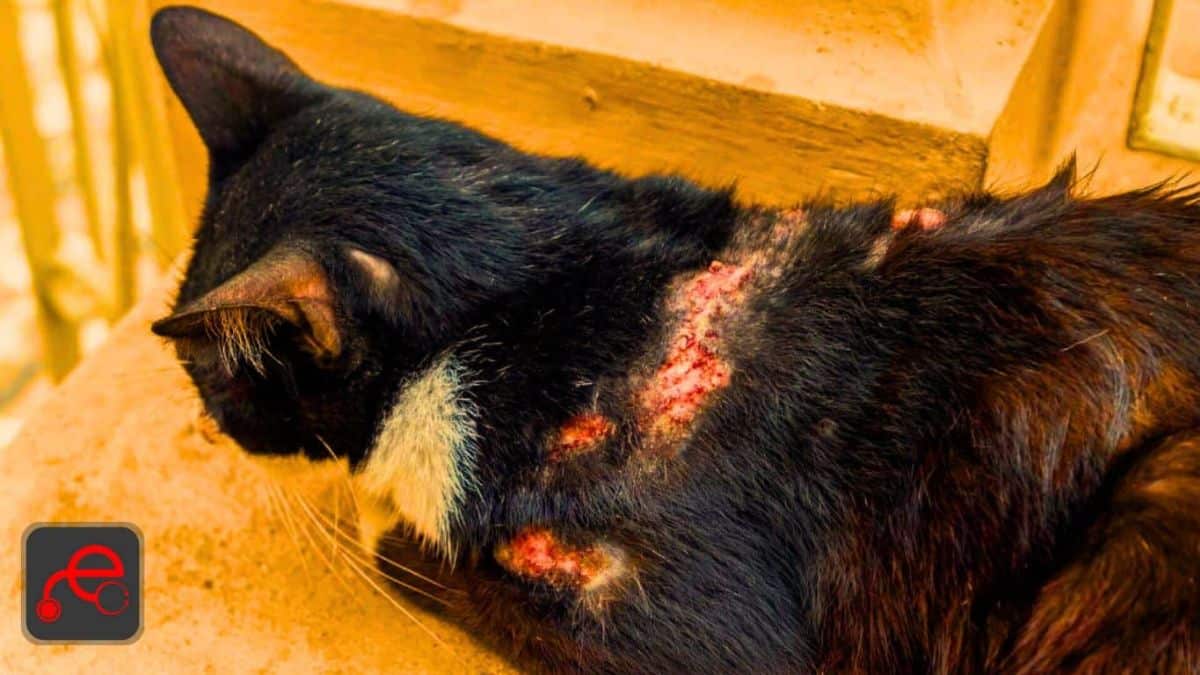Ringworm in Dogs: Symptoms & Treatment

As there are so many parasites out there, we can easily put all other worms in the category of parasites such as roundworms, tapeworms, hookworms, and whipworms. As the name indicates, however, ringworm is not an actual worm- it is a fungus. Ringworms cause fungal infections, and this infection is common across the world it usually affects all domestic animals, including dogs as well. Therefore, dog owners must be aware of the symptoms, causes, and treatment. Here, we discuss ringworm in dogs.
Don’t worry! You do not know anything about fungal infection. We have got you covered. Let us dig into the details of the fungal infection caused by the ringworms.
What is a Ringworm?
Ringworm is called fungus and it spreads fungal infections across the world including domestic animals, ringworm is named ringworm because it appears as a bumpy, red ring-like appearance as seen in human ringworm infections. Scientifically, ringworms are known as xerophytes, it is the accumulation of pathogenic fungi, as known as disease-causing fungi. 70 percent of infection in dogs is caused by ringworms; the rest of the 30 percent is caused by the Microsporum gypseum.
Outer skin acts as a host of this fungus; it lives and grows on the outer layer of the skin, and in the follicles of hair in all domestic animals and dogs. Sometimes, it is also found in the nails. The dogs that have compromised immunity majorly suffer from ringworm infections.
How Do Ringworms Spread in the Dogs?
Through direct contact with the dog fungus, this fungal infection caused by the ringworms spreads. It is also contagious, this direct contact occurs when the dog is exposed to an animal that is already suffering from the fungal infection caused by the ringworms. On the other hand, it can also happen when it touches any object or person that is contaminated with the infection such as toys, chairs, tables, bedding, or carpets.
Symptoms of the Ringworm Disease:
However, ringworm is not a serious and life-threatening condition; it can be properly treated and cured with the help of a proper diagnosis by the vet. Nevertheless, this disease is highly contagious and can multiply from one object to another in minutes, so it is necessary to involve a vet in the treatment of this fungal disease to control the outbreak of the infection.
In dogs, there is an appearance of hair loss throughout the body in circular patterns, as they dilate these lesion-prone areas may start to heal from the center, and that will create a patchy appearance, they may become red and inflamed.
Itching is not caused by the ringworms. The hair follicles that are affected can become soft and brittle, and they can be easily breakable. Through that fallen hair that becomes contaminated from the infection, the spread of infection can speed up in homes, and others will get this infection easily.
These are the symptoms of ringworm in dogs:
- The circular appearance of hair loss
- Soft, brittle, and dry hair
- Inflamed skin
- Brittle and rough claws
Changes in the appearance of the coat, hair loss, and red inflamed skin can be an indication of other signs as well. Skin problems have an association with many other skin conditions in the dogs such as Cushing disease, hypothyroidism, imbalance of nutrients, or nutritional deficiency, and it can be an indication of many other forms of allergies, different viral or parasite infections.
Ringworms and Other Animals?
The most frequently asked question is can other animals get ringworms? Ringworms can happen to cats also, but the fungus is the cause of ringworm infection in dogs. Microspore canes cause 98 percent of fungal infection in cats, and it is highly contagious as well. So cat owners, whose cats are infected by this disease and are also keeping dogs in their houses, these cats can easily spread infection from them to the dogs hence the risk of spreading the disease is higher in these beings.
Livestock and many other species of domestic animals can easily get ringworm; you should talk to your vet about the spread of infection among them.
Treatment for Ringworms in Dogs:
There is a diagnostic test for the confirmation of the ringworm as well as there are many physical tests for the diagnosis of the ringworm infection that are being performed efficiently by your vet. For a fungal culture, he will take a sample of the dog’s skin or the patch of hair follicles and he will send it to the lab for the performance of the test, and it will be examined under the wood lamp that has ultraviolet radiations for the detection of the fungal infection.
There are three steps for the treatment of ringworms.
- Topical treatment
- Oral medications
- Decontamination from the environment
Topical Treatment for Ringworm
Your vet will treat the fungal infections by using anti-fungal creams, ointment, or lotion. He also prescribes anti-fungal shampoo to prevent the outbreak of the disease and to control the disease. They also suggest shaving the dogs from the affected areas, also the long hair of the dogs should be tied properly to prevent the spread of the infection. It may take several months for the topical treatment to eliminate the infection.
Oral Medications for the Ringworm in dogs?
Oral medications are used in combination with topical therapy. Anti-fungal oral medications are used to treat fungal infections. Medicines are administered to the infected dogs for six months. It is necessary to keep the treatment ongoing until all the infection is cleared.
Preventing Ringworm in Dogs
Many owners do not know the presence of the ringworms until one of their pets gets the infection. The only way to prevent ringworm is to decontaminate the environment and fully cleanse the environment in which their pets are living.
It is necessary to keep the animal that has been infected with the infection in a separate room, you should keep them clean. You should tie their long hair all the time to prevent the spread of infection.
Consult your doctor as soon as you notice all the symptoms in the animal to prevent the infection in other animals.
Conclusion
Ringworm is a common fungal infection that can affect dogs of all ages and breeds. It is typically spread through direct contact with infected animals or contaminated objects, and it can cause a variety of symptoms, including skin lesions, itching, and hair loss. Treatment for ringworm in dogs typically involves a combination of topical and oral antifungal medications, along with environmental management to prevent re-infection. With proper diagnosis and treatment, most dogs with ringworm can make a full recovery within a few weeks to a few months. It is important to consult with a veterinarian if you suspect that your dog has ringworm or any other skin condition.
FAQs
Is ringworm contagious to humans?
Yes, ringworm is a zoonotic infection that can be transmitted from dogs to humans, and vice versa.
What are the symptoms of ringworm in dogs?
The symptoms of ringworm in dogs may include circular, scaly, or crusty skin lesions, itching, and hair loss.
How is ringworm in dogs diagnosed?
Ringworm in dogs is typically diagnosed through a combination of physical examination, skin scrapings, and fungal cultures.
Can ringworm in dogs recur after treatment?
Yes, ringworm in dogs can recur after treatment if the environment is not properly cleaned and disinfected, or if the dog’s immune system is compromised. It is important to monitor dogs for any signs of recurrence and seek veterinary care if necessary.
Can ringworm in dogs be spread to other animals besides dogs and humans?
Yes, ringworm in dogs can be spread to other animals besides dogs and humans, including cats, horses, and livestock.




